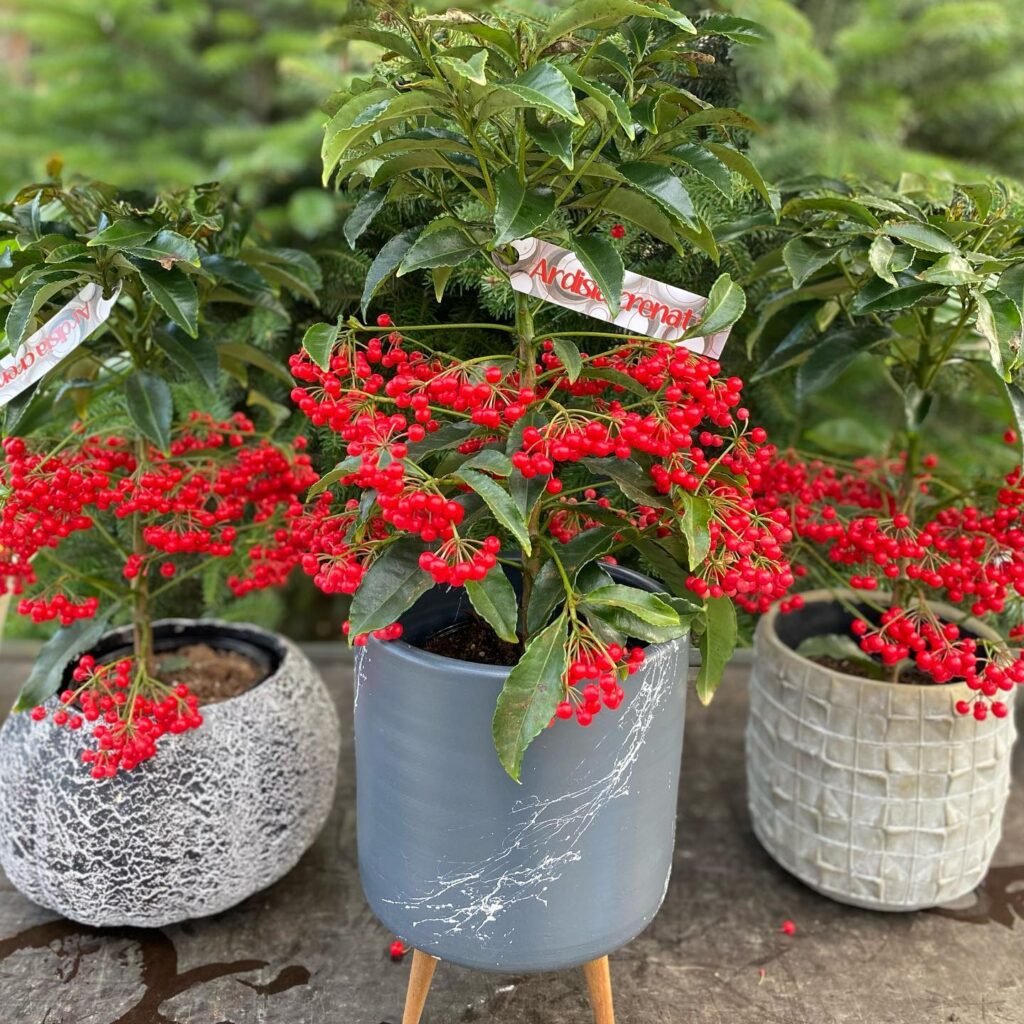As an avid gardener, I’m always on the lookout for unique and beautiful plants to add to my collection. One plant that has recently caught my attention is Ardisia crenata, also known as Christmas Berry or coral berry. With its vibrant red berries and glossy green leaves, it’s no wonder this plant is gaining popularity in the UK.
But what exactly does it take to care for Ardisia crenata and ensure its success in our British climate? Is it a finicky plant that requires constant attention, or can it thrive with minimal care? Join me as we explore the ins and outs of Ardisia crenata care in the UK and unlock the secrets to cultivating this stunning plant in our gardens and homes.
Appearance of Ardisia crenata (Christmas Berry)


Ardisia crenata, also known as Christmas Berry, is a stunning evergreen shrub that can grow up to 1 meter in height and 0.5 meters in width. Its foliage consists of glossy, dark green leaves that have a leathery texture. However, the plant’s most captivating feature is undoubtedly its bright red berries, which adorn the plant during the late fall and winter months. These small, round berries add a festive touch to any garden or home.
 Did you know the Ardisia crenata, or Christmas Berry, brightens winter with its long-lasting red berries? These berries are not only decorative but also vital food for birds in cold months.
Did you know the Ardisia crenata, or Christmas Berry, brightens winter with its long-lasting red berries? These berries are not only decorative but also vital food for birds in cold months.
Light Requirements for Ardisia crenata
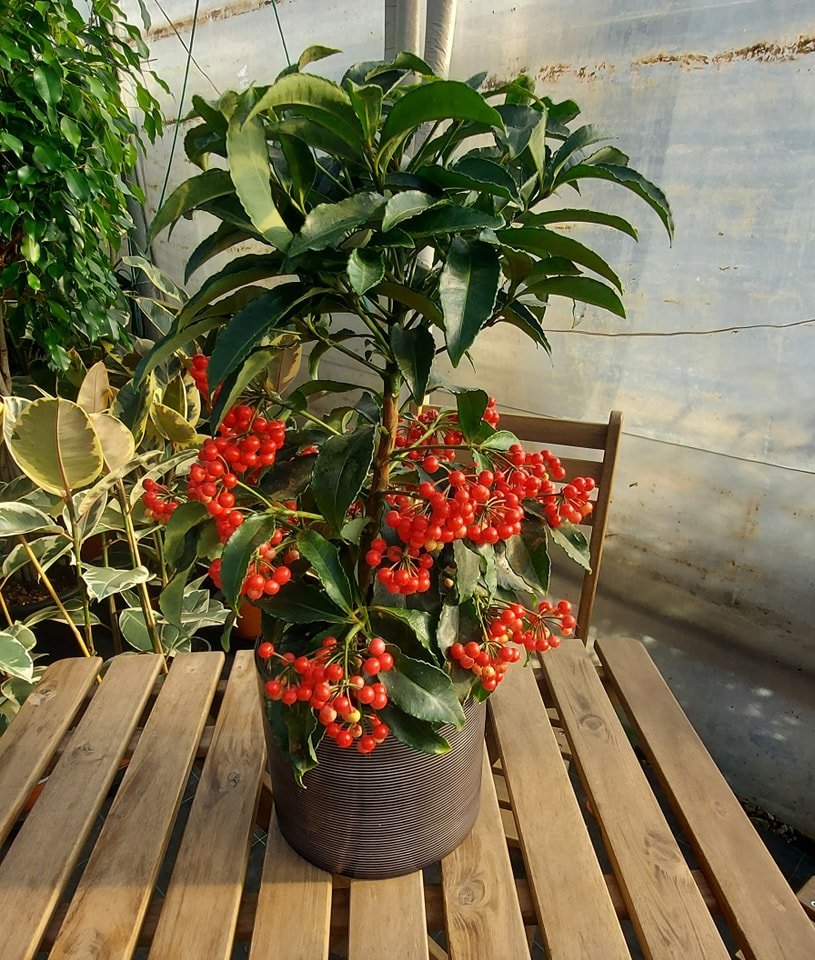
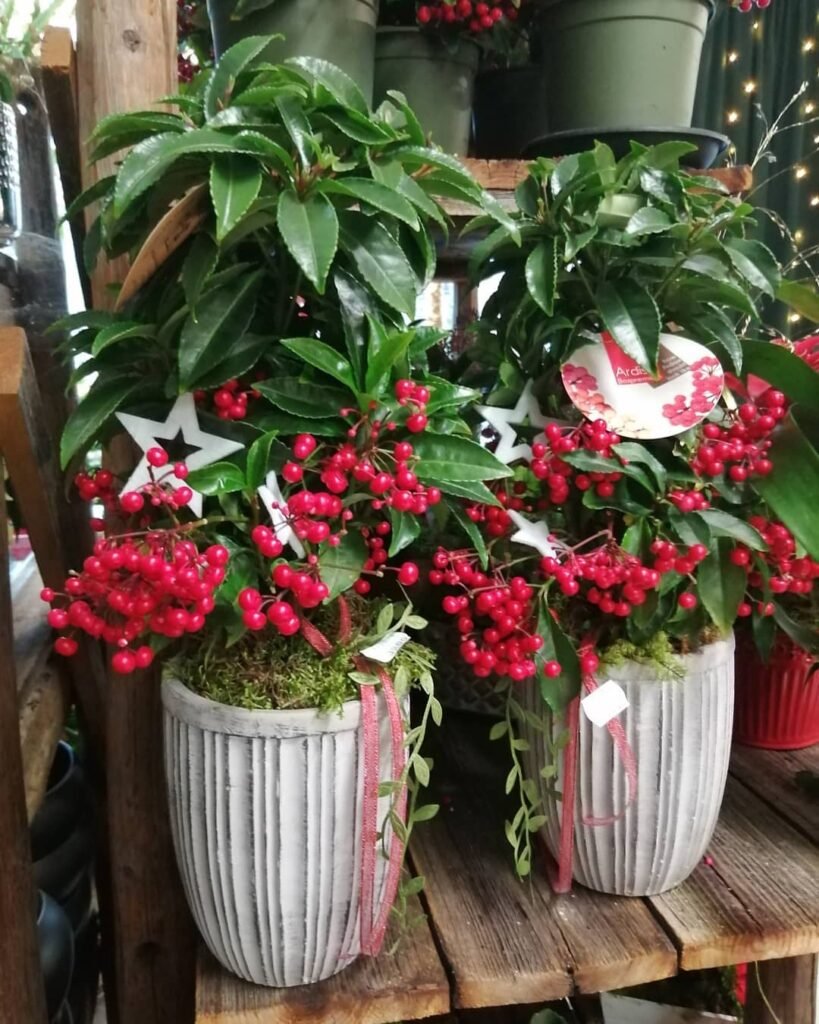
In order for Ardisia crenata, commonly known as Christmas Berry, to thrive, it requires the right amount of light. While it enjoys bright light, it is important to protect it from direct sunlight, especially during the hottest part of the day. A north, north-east, or west-facing window that provides bright, indirect light is ideal for this plant’s growth. It’s essential to find the perfect balance of light to ensure optimal growth without risking sun-scorch or dehydration.

Watering Tips for Ardisia crenata (Christmas Berry)
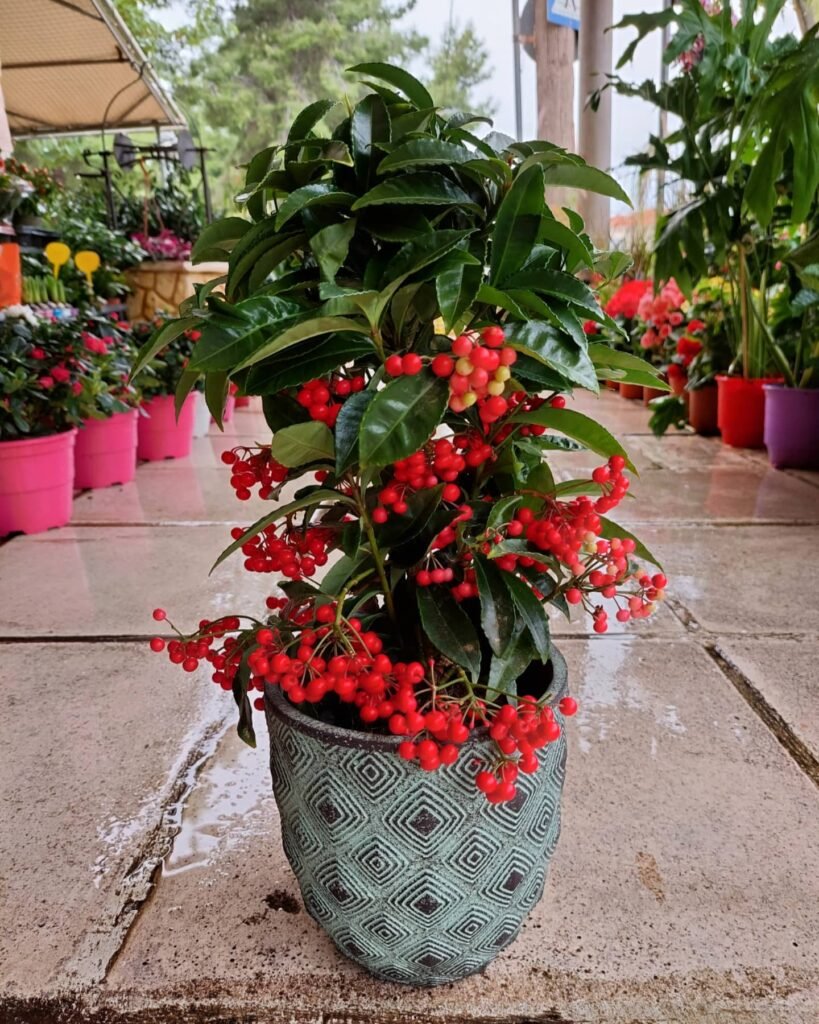
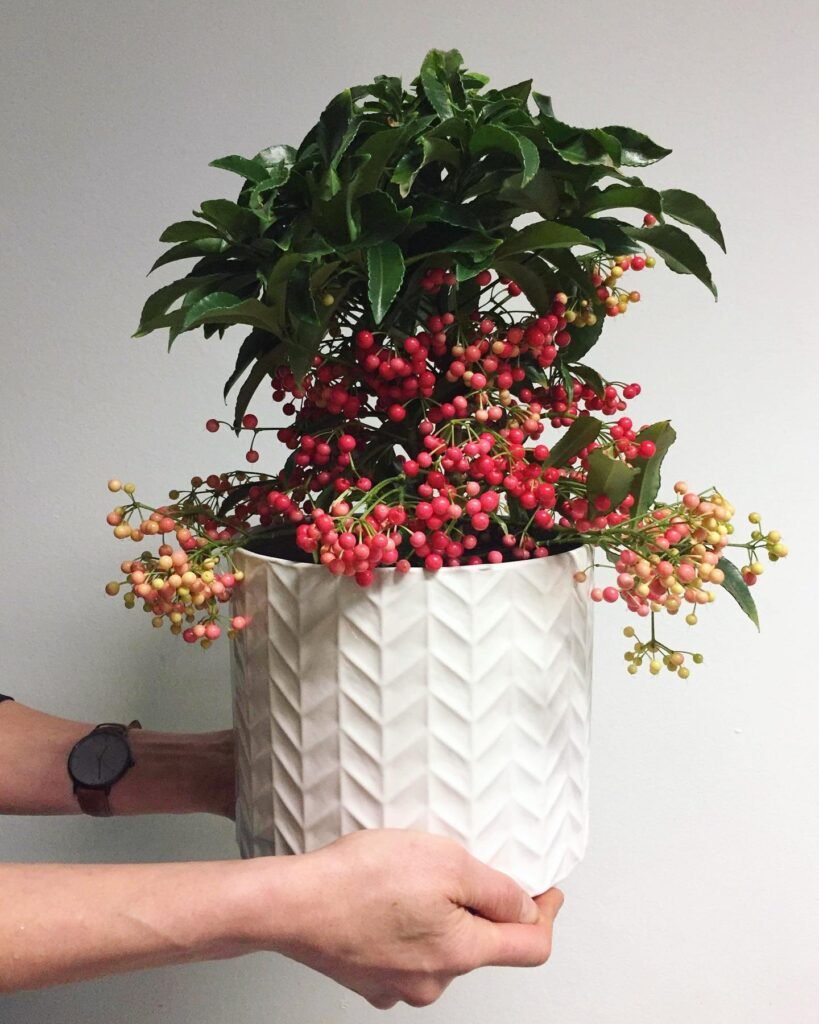
When it comes to watering your Ardisia crenata, it’s important to maintain near-constant moist soil to ensure its health and vitality. Here are some helpful tips to keep in mind:
- Allow the top third of the soil to slightly dry between waterings: Overwatering can lead to root rot and other problems, so it’s crucial to avoid saturating the soil. Letting the top layer dry out slightly helps prevent the risk of overwatering.
- Water thoroughly and ensure proper drainage: When you water your Christmas Berry, make sure to water it thoroughly, allowing excess water to drain out. Adequate drainage is essential to prevent waterlogged soil.
- Avoid using cold water while the plant is holding berries: Cold water can shock the roots and cause issues, especially when the plant is in berry-bearing season. Use lukewarm water to prevent any adverse effects on the plant.

Fertilizing and Soil for Ardisia crenata

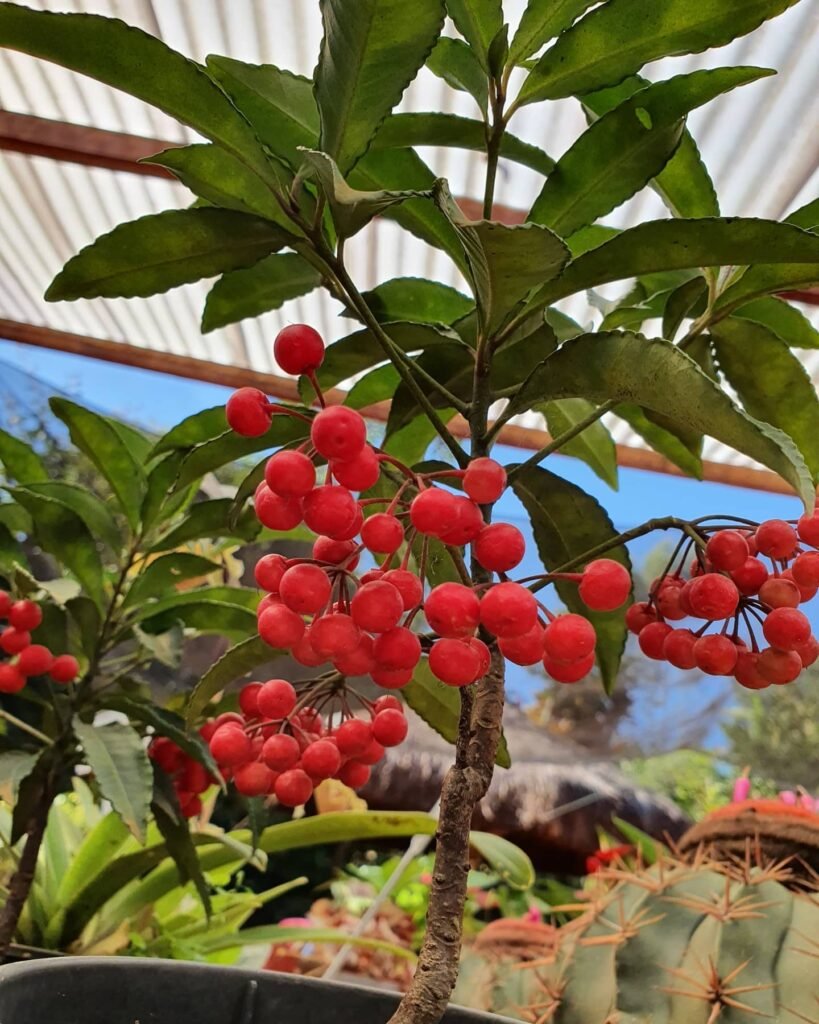
Ardisia crenata, also known as Christmas Berry, benefits from regular fertilization to ensure the development of quality foliage and flowers/berry. To achieve the best results, I recommend using a balanced, slow-release fertilizer labeled for houseplants. This type of fertilizer should be applied every four waters throughout the year, providing consistent nourishment to the plant.
When it comes to soil, Ardisia crenata prefers well-drained soil but can tolerate different soil types. For optimal growth, you can use a potting mix specifically labeled for houseplants. If you prefer to create your own soil mixture, a combination of compost, perlite, and sand will also work well. This ensures good drainage while retaining enough moisture for the plant’s needs.

Pruning and Maintenance for Christmas Berry
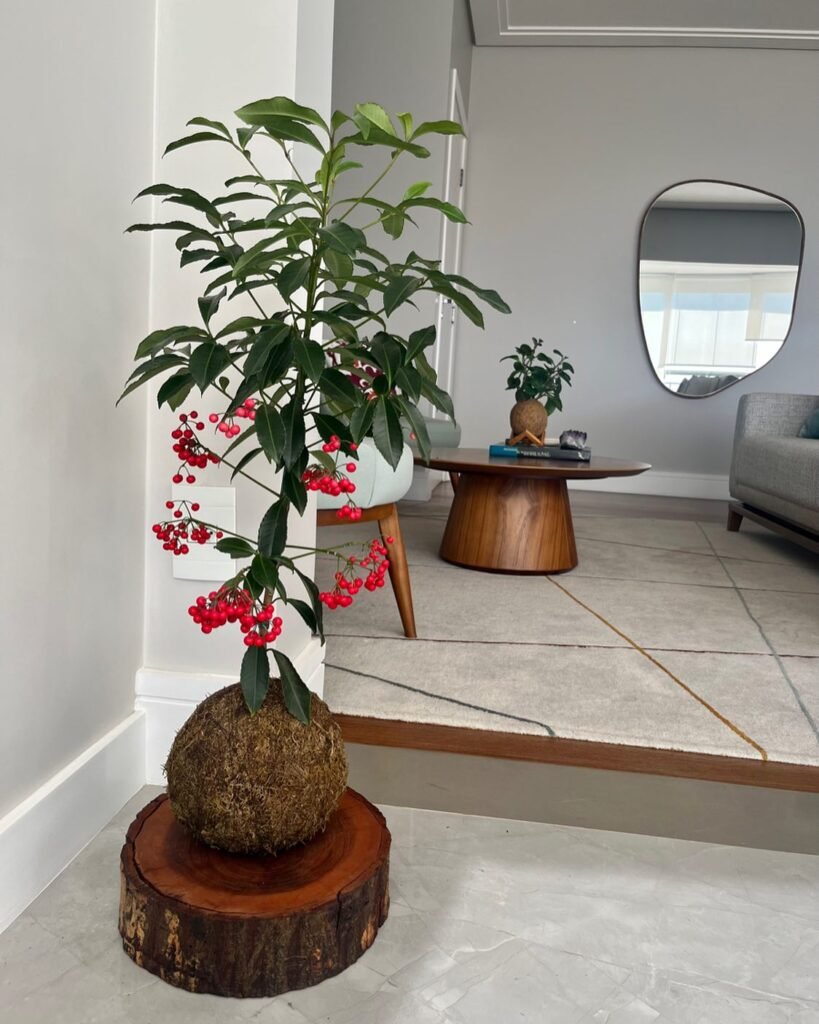
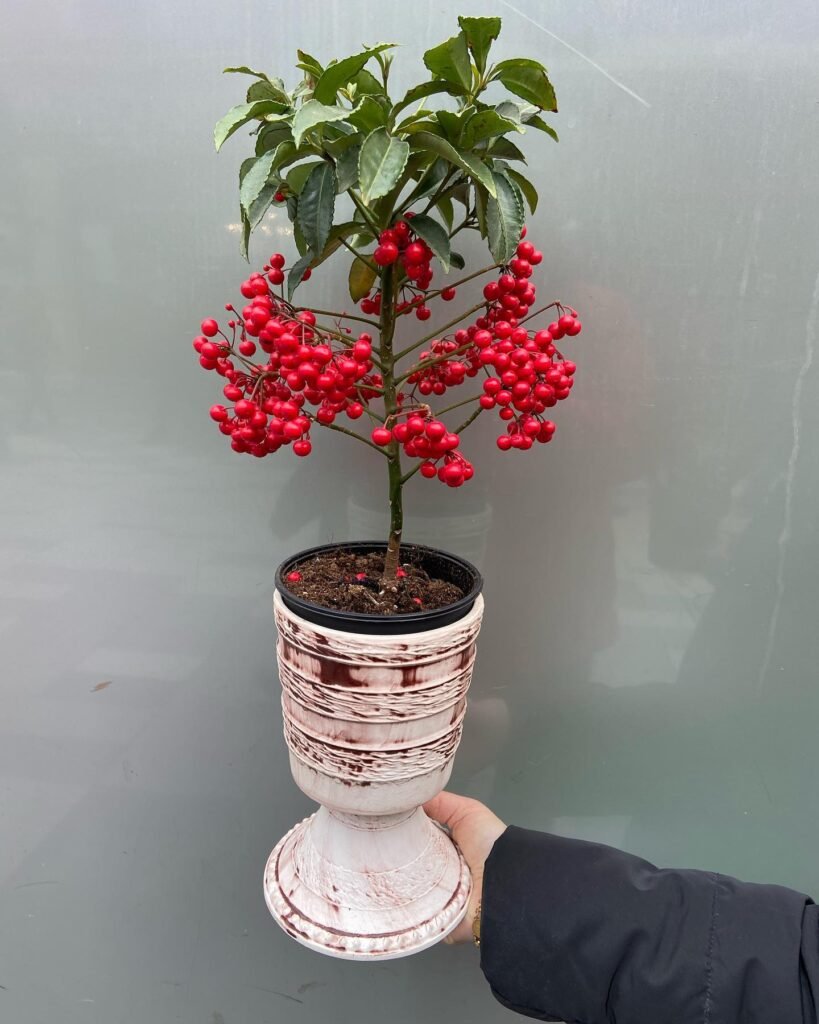
Pruning and maintenance are vital for ensuring the healthy growth of Ardisia crenata, commonly known as Christmas Berry. This beautiful plant adds a touch of festive cheer to gardens and homes, and with proper care, it can thrive in the United Kingdom.
To maintain optimal growing conditions, it’s important to remove any yellow or dying leaves from your Christmas Berry plant. This helps to encourage new growth and keeps the plant looking vibrant and healthy. Remember to use clean pruning tools to prevent the spread of bacterial and fungal diseases.
When it comes to pruning, it’s best to do so in late winter or early spring, before new growth begins. This is the ideal time to shape your Ardisia crenata according to your desired aesthetics. Keep in mind that Christmas Berry is a slow-growing plant, so pruning should focus on maintaining its shape and size rather than extensive trimming.
Tip: Prune selectively to maintain a balanced and visually appealing appearance.
Regular maintenance is also essential to ensure the ongoing health of your Christmas Berry plant. Pay attention to its watering needs, making sure to keep the soil consistently moist but not waterlogged. Monitor the light conditions, as Ardisia crenata thrives in bright, indirect light but should be protected from direct sunlight.
Tip: Avoid using cold water on your Christmas Berry plant while it has berries to prevent potential shock to the roots.
Propagating Ardisia crenata (Christmas Berry)

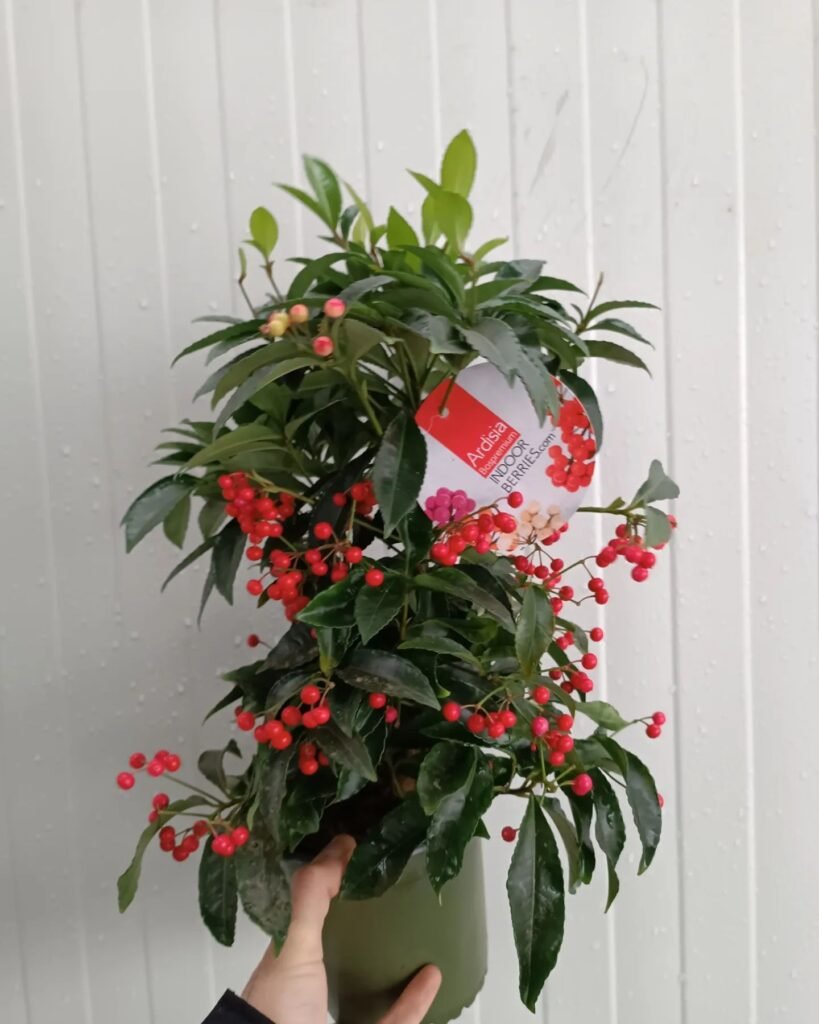
If you want to propagate Ardisia crenata or Christmas Berry, there are a few methods you can try. Whether you prefer starting from seeds, stem cuttings, or air layering, with the right care and attention, you can easily propagate this beautiful plant.
Seeds:
To propagate Ardisia crenata from seeds, you can extract them from the berries. Once you have the seeds, soak them in warm water to help speed up the germination process. This will ensure a higher success rate when growing new plants from seeds.
Stem Cuttings:
Another method is propagating Ardisia crenata through stem cuttings. Take healthy and robust stem cuttings from the plant, making sure they have at least two to three nodes. Treat the cut end with a rooting hormone to promote root development. Then, plant the cuttings in well-draining soil and provide them with the right amount of moisture and light.
Air Layering:
Air layering is another technique you can use to propagate Ardisia crenata. With this method, you don’t have to remove the stem cuttings from the mother plant. Simply make a small incision on a healthy stem, wrap it with moist sphagnum moss or rooting medium, and cover it with a plastic wrap or bag. This will encourage the formation of roots. Once roots have developed, you can cut the stem below the air layer and plant it in a separate pot.
Each propagation method has its own requirements and success rates. It’s important to choose the method that works best for you and your preferences. With patience and proper care, you can successfully propagate Ardisia crenata and expand your collection of these stunning Christmas Berry plants.
 Did you know that in some areas, the Ardisia crenata is considered an invasive species? Its ability to spread rapidly can outcompete native flora, disrupting local ecosystems. This highlights the importance of responsible gardening and awareness of plant impact on biodiversity.
Did you know that in some areas, the Ardisia crenata is considered an invasive species? Its ability to spread rapidly can outcompete native flora, disrupting local ecosystems. This highlights the importance of responsible gardening and awareness of plant impact on biodiversity.
Repotting Tips for Ardisia crenata
When it comes to caring for your Ardisia crenata, repotting is an essential task that should be performed every three years during the spring season. Repotting not only provides the plant with enough room to grow, but it also ensures its overall health and vitality.
Here are some tips to follow when repotting your Ardisia crenata:
- Choose the right pot size: Opt for a pot that is only one size larger than the current one. This will prevent overwhelming the plant’s delicate root system.
- Gently remove the plant: Carefully take the plant out of its current pot, ensuring not to damage the roots. If the plant is firmly stuck, gently tap the sides of the pot to loosen it.
- Loosen the roots: Once the plant is out of its pot, gently loosen the roots with your fingers. Remove any old or decaying soil that might hinder the plant’s growth.
- Repot in fresh soil: Use a well-draining potting soil specifically designed for houseplants. This will ensure proper drainage and prevent waterlogging, which can lead to root rot. Fill the new pot about one-third full with fresh soil.
- Place the plant: Set the Ardisia crenata into the new pot, making sure it is centered. Fill in the remaining space with fresh soil, gently firming it around the roots.
- Water thoroughly: After repotting, give the plant a thorough watering to help settle the soil and hydrate the roots. Ensure that excess water drains out of the pot.

Common Issues with Christmas Berry
When cultivating Ardisia crenata, it’s important to be aware of common issues that may arise. By understanding and addressing these problems in a timely manner, you can ensure the health and vitality of your Christmas Berry plant.
1. Under-watering
Symptoms of under-watering in Ardisia crenata include wilting, rapid flower or bud drop, and stunted growth. To prevent this issue, ensure that the soil is consistently moist, but not waterlogged.
2. Over-watering
Over-watering can lead to root rot, yellowing leaves, and a loss of flowers or berries. To avoid this problem, allow the top inch of the soil to dry out before watering and ensure proper drainage.
3. Sun Scorch
Excessive sunlight can cause sun scorch, resulting in browning or crispy leaves. To prevent this, provide partial shade or dappled sunlight to protect your Christmas Berry plant.
4. Pests
Ardisia crenata may be susceptible to pests such as leafcutter ants, birds, raccoons, mealybugs, and aphids. Regular monitoring and early detection can help mitigate the impact of these pests on your plant. Consider natural pest control methods or consult with a professional if needed.
Origins of Ardisia crenata (Christmas Berry)
Ardisia crenata, also known as Christmas Berry, originates from the Ardisia genus, which is native to tropical regions across the globe. This evergreen shrub can be found in various parts of Asia, Australia, North and South America, as well as the Pacific Islands.
The specific epithet of “crenata” in Ardisia crenata refers to the crenated flowers that adorn the plant, adding to its unique beauty. Within the Ardisia genus, there are different species, each with its own distinct characteristics and growth habits.
Helpful Videos about Ardisia crenata (Christmas Berry)
Take a moment to explore these marvellous videos I’ve discovered, focusing on the care of Ardisia crenata, commonly known as the Christmas Berry. They’re loaded with tips to simplify the nurturing of your plant, transforming gardening into a straightforward and enjoyable journey. Ideal for those eager to dive into their gardening voyage!
- Ardisia crenata (Coral berry) Houseplant Care
FAQ about Ardisia crenata (Christmas Berry)

Curious about the optimal care for your Ardisia crenata (Christmas Berry)? You’ve found the right place! I’ve compiled all the vital questions to aid you in tending to your plant effortlessly. Whether it’s getting the watering just right or tackling usual concerns, rest assured, you’re in knowledgeable hands.
Ardisia crenata, also known as Christmas Berry, is a decorative evergreen shrub with glossy leaves, pink flowers, and vibrant red berries that often appear around the festive season, making it a popular choice for adding a splash of colour to gardens and homes.
It prefers bright, indirect light. While it can tolerate partial shade, too little light may reduce flowering and berry production. A spot that receives morning sun and afternoon shade is ideal in the UK climate.
Water when the top inch of soil feels dry. Avoid over-watering as this plant does not like soggy roots. During the winter months, reduce watering but don’t let the soil dry out completely.
A well-draining, fertile soil with a slightly acidic to neutral pH is ideal. Mixing peat moss or ericaceous compost into your garden soil can help achieve the right conditions.
Feed with a balanced, liquid fertiliser every 4-6 weeks during the growing season (spring and summer). Cease fertilising in autumn and winter when the plant’s growth naturally slows.
Yes, in milder regions. However, it’s vulnerable to frost, so in cooler areas, it’s better suited as a container plant that can be brought indoors or into a greenhouse over winter.
It thrives in temperatures between 16°C and 24°C. Protect it from temperatures below 5°C to prevent frost damage.
Propagation is most successfully done by seeds or stem cuttings in spring or early summer. Seeds can be sown in trays filled with a moist, well-draining seed mix, while cuttings should be placed in a similar medium until they root.
Yellowing leaves can be a sign of over-watering, under-watering, or poor drainage. Check the moisture level of the soil and adjust your watering schedule accordingly.
Prune in late winter or early spring to maintain shape and encourage bushier growth. Remove any dead or damaged branches to improve the plant’s overall health.
Christmas Berry is relatively disease-resistant but watch for common pests like spider mites and aphids. Use a gentle insecticidal soap or neem oil for control.
Repot every 2-3 years or when it becomes root-bound. Spring is the best time to repot, using a slightly larger pot each time.
Yes, the berries and leaves are toxic if ingested. Keep the plant out of reach of pets and children.
Ensure the plant gets enough light and is properly fertilised during the growing season. Patience is key, as it may take a few years for new plants to start producing berries.
Yes, in milder UK climates, you can plant it in the ground. Just ensure it’s in a sheltered spot with well-draining soil and protection from harsh winter conditions.
Ardisia crenata may take several years to mature enough to flower and produce its characteristic berries. Providing optimal care in terms of light, water, and nutrients can encourage faster growth and berry production.
Companion plants that enjoy similar conditions, such as ferns, azaleas, and rhododendrons, can create a harmonious setting, sharing the same light, soil, and water preferences.
I trust this FAQ has offered clarity on caring for your Ardisia crenata (Christmas Berry). Should you have further inquiries, please feel free to post them in the comments. I’m here to provide assistance. Keep in mind, every gardener starts from the beginning, and there’s continually something new to learn as you look after your verdant companion.

